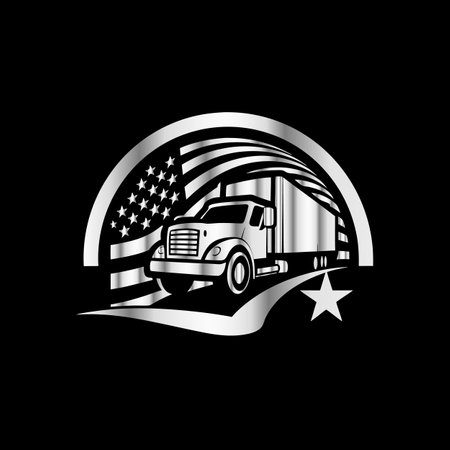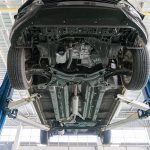1. Introduction: The Rise of Car Culture in America
Americas love affair with automobiles has played a significant role in shaping car shows as we know them today. From the early 20th century to the present, cars have been more than just a means of transportation—they symbolize freedom, innovation, and personal expression. This passion for automobiles led to the creation of car shows, starting as small local gatherings and growing into nationally and internationally recognized events.
The Early Days of Car Enthusiasm
In the early 1900s, cars were still a novelty. Enthusiasts would gather informally to showcase their vehicles, discuss mechanics, and share their excitement for this new mode of transportation. These early meetups were the foundation of what would later become organized car shows.
From Local Meets to National Recognition
As automobiles became more popular, local car meets evolved into larger events where manufacturers and enthusiasts could come together. By the mid-20th century, car clubs, dealerships, and even industry leaders began organizing official car shows to display the latest models, concepts, and modifications.
Key Milestones in the Evolution of Car Shows
| Time Period | Car Show Development |
|---|---|
| Early 1900s | Small local meets among car enthusiasts |
| 1920s-1930s | First organized auto exhibitions showcasing new models |
| 1950s-1960s | Emergence of large-scale car shows and hot rod culture |
| 1970s-1990s | International motor shows gain popularity |
| 2000s-Present | Global car shows with high-tech innovations and digital integration |
The Role of Car Shows in American Culture
Car shows quickly became more than just gatherings—they became cultural events that celebrated American innovation and creativity. These shows provided a platform for automakers to unveil groundbreaking technologies, concept cars, and futuristic designs, helping shape the future of the industry.
Popularity Across Different Generations
Each generation has contributed to the popularity of car shows, from the classic muscle cars of the 1960s to todays electric vehicles and autonomous driving technologies. The evolution of car culture continues to influence how these events are organized and what they showcase.
Looking Ahead
With the rise of digital media and virtual events, car shows are adapting to new technologies and broader audiences. The passion for automobiles remains strong, ensuring that car shows continue to evolve and thrive.
2. Local Meets and Grassroots Gatherings
Car culture in America has deep roots in local communities, where enthusiasts have long gathered to showcase their vehicles and connect with like-minded individuals. Before massive international auto expos, car lovers would meet in parking lots, diners, and other community spaces to share their passion for automobiles.
The Rise of Informal Car Meets
In the early days of car culture, local enthusiasts found creative ways to gather and display their rides. These casual meetups often took place in easily accessible areas, making them popular among car owners of all types.
Popular Locations for Early Car Meets
| Location | Reason for Popularity |
|---|---|
| Parking Lots | Spacious and easy to access |
| Diners & Drive-Ins | Provided food, drinks, and a social atmosphere |
| Community Centers | Organized by local groups, often with events |
Sharing Knowledge and Building Connections
These gatherings were more than just a place to showcase cars; they became essential spaces for sharing automotive knowledge. Enthusiasts exchanged tips on maintenance, modifications, and performance upgrades, helping to cultivate a deeper appreciation for automobiles.
Topics Discussed at Early Car Meets
- Engine tuning and performance improvements
- Custom paint jobs and aesthetic modifications
- Mechanical troubleshooting and repair advice
- Upcoming events and local racing news
The Impact on Car Culture
These small, community-driven gatherings played a significant role in developing modern car culture. They helped popularize vehicle modifications, fostered lifelong friendships, and laid the groundwork for larger, more organized car shows that would emerge in the years to come.

3. Three, The Expansion into Organized Auto Shows
As car culture grew in popularity, informal gatherings of enthusiasts started transforming into well-organized events. Car shows evolved from simple meet-ups into structured exhibitions featuring sponsors, judging contests, and manufacturer participation. This shift laid the foundation for large-scale auto shows that attract thousands of visitors annually.
The Rise of Sponsorship and Corporate Involvement
Early car meets were often casual affairs where owners displayed their vehicles for fun. However, as interest in these events increased, businesses saw the opportunity to engage with potential customers. Sponsorships soon became a crucial aspect, allowing brands to showcase products while helping organizers cover expenses such as venue rentals, security, and promotions.
Judging Contests and Competitive Elements
One of the major changes in organized car shows was the introduction of judging contests. Competitions allowed owners to showcase their vehicles’ craftsmanship, originality, and modifications, with prizes awarded in different categories. These contests not only motivated participants to refine their cars but also engaged audiences by giving them a reason to follow the event closely.
Common Car Show Judging Categories
| Category | Criteria |
|---|---|
| Best in Show | Overall appearance, uniqueness, quality of modifications |
| Best Classic Car | Authenticity, restoration quality, historical significance |
| Best Custom Build | Creativity, quality of customization, performance enhancements |
| People’s Choice | Votes from attendees on their favorite car |
Automaker Participation and Industry Influence
As organized car shows gained prestige, auto manufacturers began to take notice. Recognizing the marketing potential, car companies started showcasing their latest models and concept cars at major events. This presence not only attracted media attention but also allowed brands to directly interact with car enthusiasts and potential buyers.
Impact on the Auto Industry
- Car shows became a platform for manufacturers to unveil new models and test public reactions.
- Automakers used these events to gauge customer preferences and future market trends.
- The competition among brands led to innovation, influencing vehicle design and technology advancements.
With the growing involvement of sponsors, competitive judging, and manufacturer participation, car shows evolved from casual gatherings to high-profile events. This transformation ultimately set the stage for the large-scale exhibitions we see today.
4. Major American Auto Shows: Icons of Innovation
Car shows in America have grown from small gatherings to massive industry-shaping events. Some of the biggest and most influential auto shows in the U.S. play a crucial role in shaping vehicle design, technology, and future trends. Lets take a closer look at three of the most iconic auto shows: the Detroit Auto Show, the Los Angeles Auto Show, and SEMA.
Detroit Auto Show (North American International Auto Show)
Known officially as the North American International Auto Show (NAIAS), the Detroit Auto Show has been a cornerstone of the automotive industry for over a century. Taking place in the Motor City, this event showcases the latest innovations from automakers around the world.
Why It’s Important
- Major car brands unveil new models, concept cars, and cutting-edge technologies.
- Industry leaders and media gather to discuss the future of mobility.
- Electric vehicles (EVs) and autonomous driving advancements are key highlights.
Los Angeles Auto Show
The Los Angeles Auto Show is another major event, focusing on the future of mobility, green energy, and luxury vehicles. Held in one of the biggest car markets in the U.S., the LA Auto Show attracts top automakers and car enthusiasts alike.
Key Highlights
- Emphasis on EVs, hybrids, and sustainable transportation.
- Luxury brands showcase their latest models.
- Interactive experiences allow visitors to test new technologies.
SEMA Show
The Specialty Equipment Market Association (SEMA) Show is unlike traditional auto shows. Instead of focusing on new car models, SEMA is all about customization, aftermarket parts, and unique builds.
What Makes SEMA Special?
- Features highly modified cars, trucks, and performance vehicles.
- Aftermarket companies introduce new accessories and performance parts.
- Custom builds push the limits of automotive creativity.
Comparison of Major American Auto Shows
| Auto Show | City | Focus | Notable Highlights |
|---|---|---|---|
| Detroit Auto Show | Detroit, MI | New car launches, future technology | Concept cars, EV advancements, autonomous vehicles |
| Los Angeles Auto Show | Los Angeles, CA | Luxury, EVs, sustainability | Green tech, high-end vehicles, interactive experiences |
| SEMA Show | Las Vegas, NV | Customization, aftermarket | Modified vehicles, aftermarket parts, unique designs |
These major car shows not only attract enthusiasts and industry professionals but also shape the future of automotive design and technology. Whether it’s revealing groundbreaking innovations or showcasing custom builds, they play a significant role in driving the industry forward.
5. Five: The Global Influence and Digital Evolution
American Car Shows’ Impact on International Events
American car shows have long been a trendsetter in the automotive world, influencing international auto events in major cities like Tokyo, Geneva, and Frankfurt. From design innovations to marketing strategies, these shows shape how global brands present their latest models.
Key Areas of Influence
| Influence | Impact on International Shows |
|---|---|
| Concept Car Debuts | Many international shows mirror America’s tendency to unveil futuristic concept cars. |
| Specialized Themes | Events like SEMA inspire niche shows worldwide focused on aftermarket modifications. |
| Automaker Participation | Foreign manufacturers often debut models in the U.S. first before taking them global. |
The Rise of Virtual Showcases
With advancements in technology, car shows have embraced digital formats. Automakers now leverage virtual showcases to reach a broader audience, allowing people worldwide to experience new vehicle launches from their screens.
Benefits of Virtual Car Shows
- Wider Access: Enthusiasts from all over the world can view new releases in real-time.
- Cost Efficiency: Auto brands reduce expenses on travel, logistics, and event setup.
- Interactive Features: Virtual reality and 360-degree views enhance the user experience.
Livestreaming: Bringing Shows to the Masses
Livestreaming has revolutionized how people engage with car shows. Major events like the LA Auto Show and Detroit Auto Show broadcast key unveilings, allowing enthusiasts to stay updated without attending in person. Social media platforms such as YouTube, Facebook, and Instagram play a crucial role in making these events accessible.
Popular Platforms for Livestreaming Car Shows
- YouTube Live
- Facebook Live
- Instagram Live
- TikTok Streams
- Dedicated Event Websites
As technology continues advancing, the way people experience car shows will evolve further, blending physical and digital elements to create more immersive experiences.

